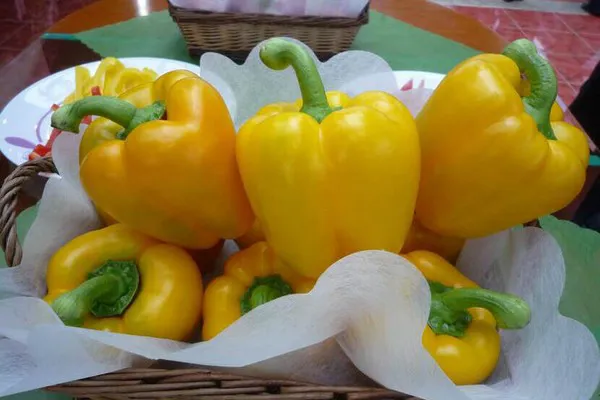During the second edition of the Business Week Taiwan and South Korea, the agricultural department of the embassy of the Netherlands in Seoul, together with the agricultural section of the Netherlands Office in Taipei and RVO organized an agricultural session. The session focused on chances in both countries in the field of agri-tech and cold chain logistics. During the session, a lot of questions on facts and figures on the Korean vegetable sector were asked by participants. This article gives an overview of the South Korean vegetable sector.
The total production of vegetables was around 9.2 million ton in 2019. The largest vegetable crop was Chinese cabbage, followed by onion, radish, potato, water melon, green onion, tomato, sweet potato, cabbage, cucumber, pumpkin, garlic, strawberry, peppers, and melon.
As for greenhouse vegetables, the largest one was melon (Korean variety), followed by tomato, cucumber, peppers, melon and pumpkin. Most of greenhouse vegetables were produced in plastic greenhouses. Glasshouses mostly raised paprika or tomato.
Trade vegetable
The self-sufficiency rate of agrifood in South Korea as a whole is around 49%. Compared to that, the self-sufficiency rate of vegetable is relatively high with around 83%. This is because of Korean food culture, preferring fresh vegetables for side dishes or BBQ. Total import value of vegetables in 2020 was USD 693 million. Due to difficulty in keeping freshness during international transportation, many vegetables were imported into South Korea as frozen (38%) or dried (12%) products. China was the largest exporter of vegetables into South Korea, followed by Vietnam, US, Thailand and New Zealand. The Netherlands is increasingly exporting dried vegetables into South Korea, with a total exporting value of USD 701,000 in 2020. Under the Korean phytosanitary regulations, the Netherlands is not allowed to export Solanaceae vegetables such as peppers (including paprika), tomato and potato into South Korea. Only Brassicaceae vegetables such as cabbage and radish are permitted to export into South Korea.

In 2020, South Korea imported USD 15.5 million (31,000 ton) of potatoes from US and Australia. Only US, Australia and New Zealand made bilateral agreements for the export of potatoes into South Korea.
South Korea’s total export value of vegetables in 2020 was USD 205 million. Paprika was the largest crop, accounting for 42% of the total export value, followed by oyster mushroom, Enoki mushroom, Chinese cabbage and tomato. Japan was the largest export destination, accounting for 51% of the export, followed by US, Taiwan and the Netherlands. The Netherlands imported USD 9.8 million of vegetables from South Korea, mainly Oyster mushroom (84%) and Enoki mushroom (12%). As for Paprika, 99.7% of total export went to Japan. Korean paprika gained 83% of the market share of imported paprika in the Japanese market. In 2019, South-Korea and China agreed on import requirements for the export of paprika into China, and exported paprika into China in August 2020 for the first time. Korea is currently trying to open the Vietnamese market.
For more information:
Ministry of agriculture, nature and food quality of the Netherlands
www.government.nl/en
